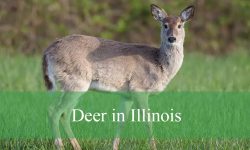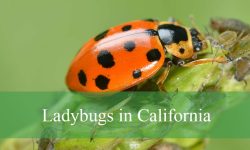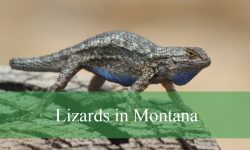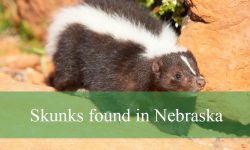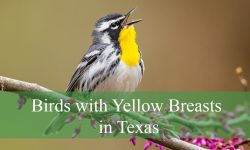If you spend time outdoors in Connecticut, chances are you’ve encountered a few biting or stinging insects. While many bugs are harmless, some can cause painful reactions or even spread diseases. Knowing which ones to avoid is key to staying safe year-round.
From ticks that transmit Lyme disease to hornets that defend their nests fiercely, Connecticut is home to several species worth recognizing. Some are tiny and easy to miss, while others are large and intimidating, but all pose potential risks if disturbed.
This guide will help you identify the 15 most dangerous bugs in Connecticut, learn about their habitats, behaviors, and the symptoms of their bites or stings. With the right knowledge, you can enjoy the outdoors safely while minimizing unwanted encounters.
Types of Dangerous Bugs Found in Connecticut
Black-legged Tick (Deer Tick)
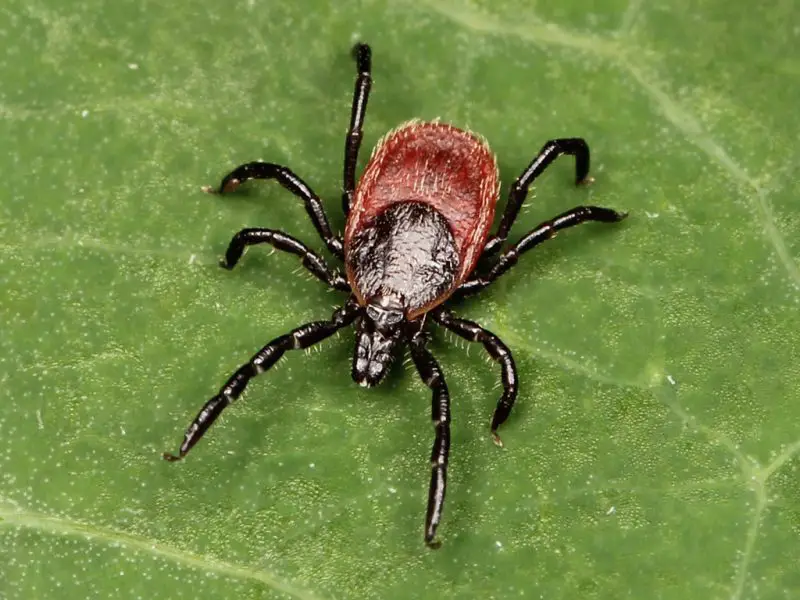
The Black-legged Tick, also known as the Deer Tick, is a small arachnid that has become infamous in Connecticut due to its role in spreading Lyme disease. Adults are reddish-brown with black legs and measure about 3 to 5 millimeters in length before feeding. Females are typically larger than males and become noticeably engorged after consuming blood. Their compact, flat bodies make them easily hidden within grass, shrubs, or fur, allowing them to attach unnoticed.
Identification of the Deer Tick is relatively straightforward due to its dark legs and rounded, shield-like scutum on the back. Nymphs, the immature form, are even smaller—often no larger than a poppy seed—yet they are responsible for most human infections. These ticks are most active in late spring and early summer, though adults can remain active in mild winter temperatures. They prefer shaded, humid areas such as forests, leaf litter, and along animal trails.
The behavior of the Deer Tick involves “questing,” a method in which it climbs to the tips of grass blades and waits with outstretched legs to grab onto a passing host. They feed on a wide range of animals, including deer, rodents, and humans. The tick feeds slowly, remaining attached for several days while taking in blood. Their saliva contains anesthetic compounds, meaning most people never feel the bite until after the tick has attached.
The major danger of this species lies in the pathogens it transmits. The Deer Tick is the primary vector for Borrelia burgdorferi, the bacterium that causes Lyme disease, as well as other infections like babesiosis and anaplasmosis. If not removed promptly, the tick’s bite can result in flu-like symptoms, fatigue, and the characteristic bull’s-eye rash. Preventing bites through repellents, long clothing, and thorough tick checks after outdoor activities is essential in Connecticut’s tick-prone regions.
American Dog Tick
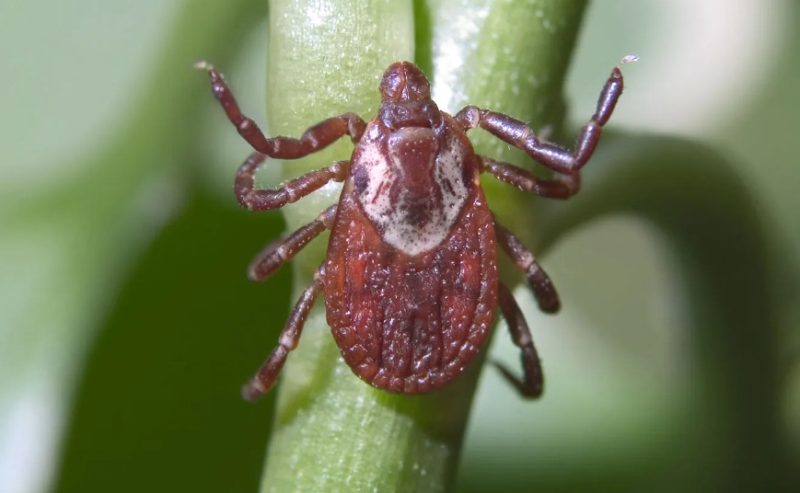
The American Dog Tick is one of the largest and most easily recognized tick species in Connecticut. Adult females measure around 5 millimeters unfed but can swell to over 1 centimeter when engorged. Their bodies are brown with distinctive grayish-white patterns on the dorsal shield. Males are smaller and have more ornate markings. This tick species prefers warm, open areas such as meadows, roadsides, and grassy fields, where they wait for mammals to pass by.
Identification of the American Dog Tick is aided by its ornate scutum and relatively large size compared to the Deer Tick. They are commonly found on domestic dogs, raccoons, and other medium-sized mammals but will bite humans when available. Their life cycle includes larval, nymph, and adult stages, requiring three separate blood meals before completion. Each feeding stage can take several days, during which they can transmit pathogens.
Behaviorally, the American Dog Tick does not climb high vegetation but instead stays close to the ground. They are most active from April to September, peaking in mid-summer. They do not survive well in shaded or wooded environments but thrive in sunny habitats. These ticks are known for their persistence and ability to attach to hosts quickly, sometimes within minutes of contact.
This species poses a significant health threat because it can transmit Rickettsia rickettsii, the bacterium that causes Rocky Mountain spotted fever, and Francisella tularensis, responsible for tularemia. Their bites can cause irritation, itching, and, in rare cases, allergic reactions. Immediate removal with fine-tipped tweezers and cleaning the area with antiseptic reduces the risk of disease. Dog owners should routinely check pets for ticks, as they are frequent carriers into homes.
Brown Recluse Spider
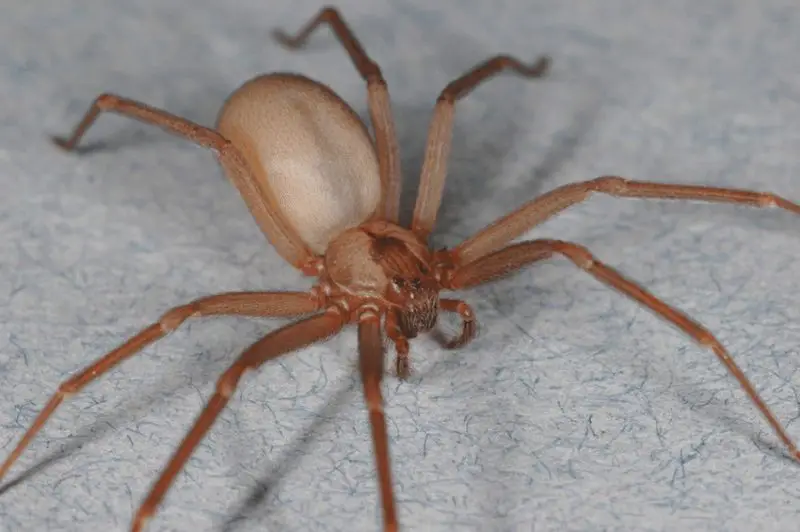
The Brown Recluse Spider is a reclusive and rarely seen species in Connecticut, though occasional encounters do occur. It has a light to dark brown body with a distinct violin-shaped marking on its back, giving rise to its nickname “fiddleback spider.” Adults typically measure between 6 and 20 millimeters in body length, with long, slender legs. Unlike most spiders, it has six eyes arranged in three pairs, a key feature for identification.
This spider prefers dry, undisturbed areas such as basements, attics, closets, and storage sheds. Outdoors, it shelters under rocks, wood piles, or bark. It is nocturnal, emerging at night to hunt small insects and other spiders. The Brown Recluse spins irregular webs that it uses for retreat rather than trapping prey. Its shy and secretive nature means it often bites humans only when accidentally pressed against skin, such as when trapped in clothing or bedding.
The Brown Recluse’s venom is cytotoxic, meaning it destroys tissue around the bite site. Initial symptoms may include mild pain or redness, developing into a blister or ulcer over several days. In severe cases, the bite can lead to necrosis—localized tissue death—requiring medical treatment. Systemic symptoms such as fever, chills, and nausea may also occur, though they are less common.
While the Brown Recluse is not aggressive, its bites should always be treated seriously. Immediate washing, application of ice, and seeking medical care are recommended. Prevention involves keeping homes clean, reducing clutter, and shaking out clothing or bedding before use. Despite its fearsome reputation, bites are uncommon, and the spider plays an important role in controlling pest populations.
Black Widow Spider
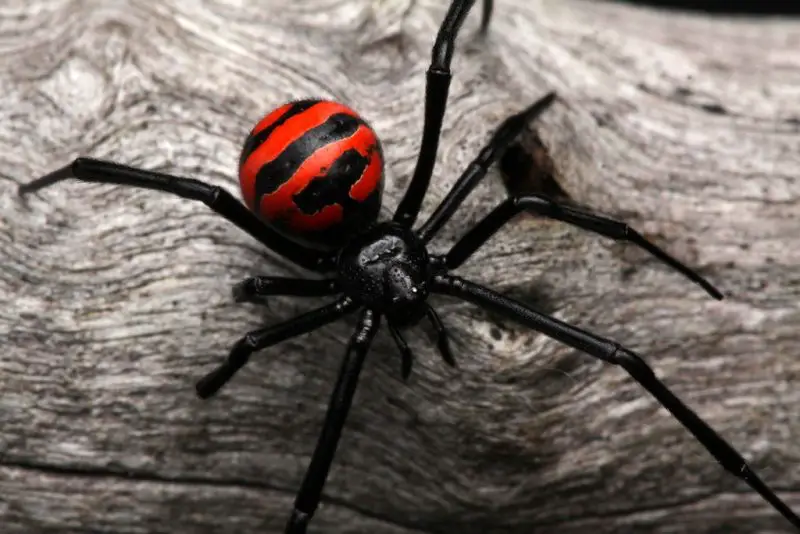
The Black Widow Spider is one of the most recognizable venomous spiders in North America and occasionally appears in sheltered spots around Connecticut. It has a shiny black body with a distinctive red hourglass marking on the underside of its abdomen. Females measure about 1.5 centimeters in body length, while males are smaller and lighter in color. The species prefers dark, protected areas like sheds, garages, woodpiles, and crawl spaces.
Identification is easy due to the spider’s glossy body and contrasting red mark. Females are more dangerous, as their venom is far more potent than that of males. The web of a Black Widow is irregular and sticky, designed to trap small insects and even other spiders. These spiders are generally non-aggressive and will only bite when disturbed or trapped against the skin.
Their venom contains neurotoxins that affect the nervous system, leading to intense pain, muscle cramps, and sometimes abdominal rigidity. Symptoms can appear within an hour and may include sweating, nausea, or difficulty breathing in severe cases. Although rarely fatal, bites require medical attention, especially for children, the elderly, or individuals with weakened immune systems.
In Connecticut, encounters are rare but possible during the warmer months. People should exercise caution when handling firewood, garden tools, or outdoor furniture. Preventive measures include wearing gloves, sealing entry points in homes, and keeping storage areas free of clutter. Black Widow Spiders play a useful ecological role by controlling insect populations, though their venomous bite makes them one of the most feared arachnids in the region.
Eastern Yellowjacket
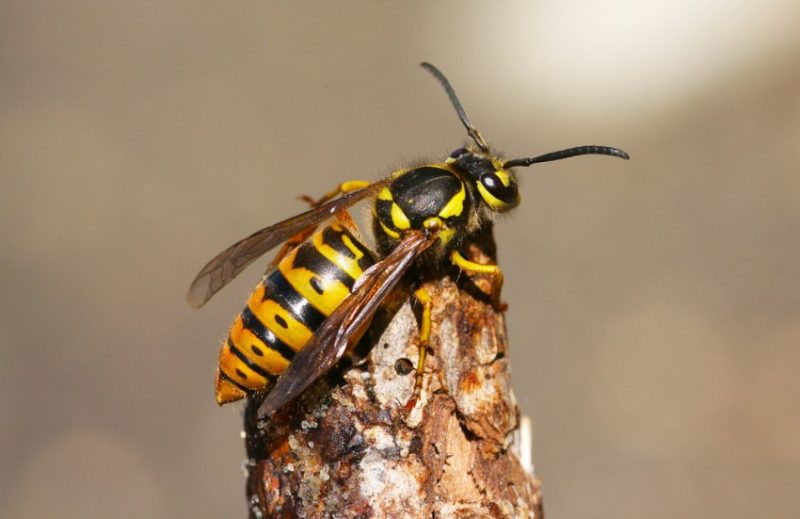
The Eastern Yellowjacket is a small, aggressive wasp species common across Connecticut. Adults measure about 12 to 17 millimeters in length and are easily recognized by their bright yellow and black banded bodies. Their compact, fast-flying form allows them to move quickly when defending their nests. They are social insects, living in colonies that can number thousands of individuals by late summer.
These wasps build paper-like nests made from chewed wood fibers, often located underground, in wall cavities, or inside hollow trees. The colony’s activity peaks during the warm months, and workers become more aggressive as resources diminish in fall. Yellowjackets are attracted to sugary foods, garbage, and outdoor picnics, which brings them into frequent contact with humans.
Behaviorally, Eastern Yellowjackets are territorial and will sting multiple times if they feel threatened. Their stings are extremely painful and can cause redness, swelling, and itching. In some individuals, particularly those allergic to insect venom, stings can trigger anaphylaxis—a life-threatening reaction requiring immediate medical care. The sting delivers venom containing histamines and enzymes that irritate skin tissue and the nervous system.
Despite their aggressive nature, Yellowjackets are important scavengers and pollinators. Reducing attractants like open food and sweet drinks, as well as sealing garbage cans, helps prevent encounters. When nests are discovered near homes, professional removal is recommended. Caution should always be exercised around outdoor areas where they may nest, as disturbing the colony can provoke a rapid and coordinated attack.
Bald-faced Hornet
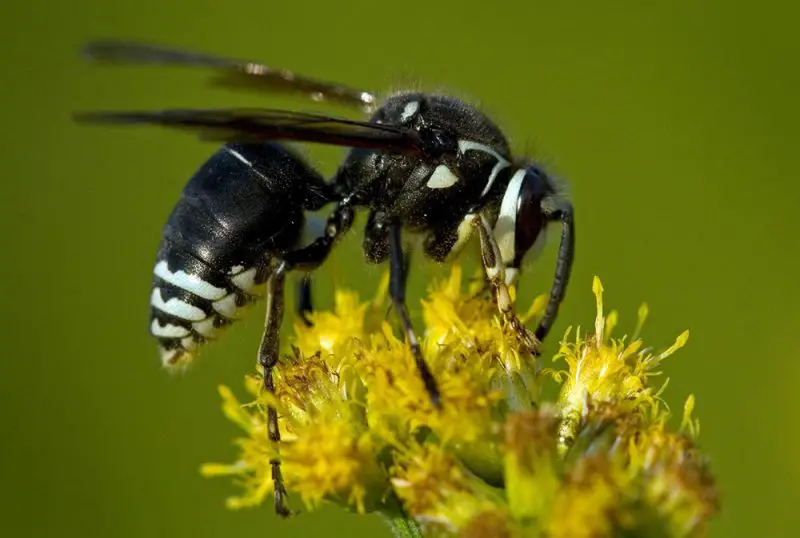
The Bald-faced Hornet, despite its name, is technically a type of yellowjacket rather than a true hornet. It is large and striking in appearance, with black and white coloration on its face and abdomen. Adults typically measure between 15 and 20 millimeters in length and are easily recognized by their smooth, hairless bodies and loud buzzing flight. This wasp is a common sight in Connecticut during the summer months, especially around wooded areas, parks, and residential yards.
Their paper nests are remarkable constructions—large, football-shaped structures often suspended from tree branches, shrubs, or under eaves. The colony can contain several hundred workers by mid to late summer. These hornets are highly protective of their nests and will attack aggressively if they perceive a threat, stinging repeatedly without hesitation. The sting is extremely painful and accompanied by swelling and burning sensations.
Bald-faced Hornets primarily feed on flies, caterpillars, and other insects, making them beneficial for pest control. However, their defensive nature makes them one of Connecticut’s more dangerous insects. Their venom contains potent toxins that can trigger allergic reactions in sensitive individuals, sometimes leading to anaphylaxis. Multiple stings can cause dizziness, nausea, and localized inflammation.
Caution is advised around their nests, particularly during late summer when colonies reach peak population. Homeowners should never attempt to remove nests without proper protection. Professional pest control services can safely handle extermination. Despite their aggression, Bald-faced Hornets play an important ecological role by regulating insect populations in their habitats.
Paper Wasp
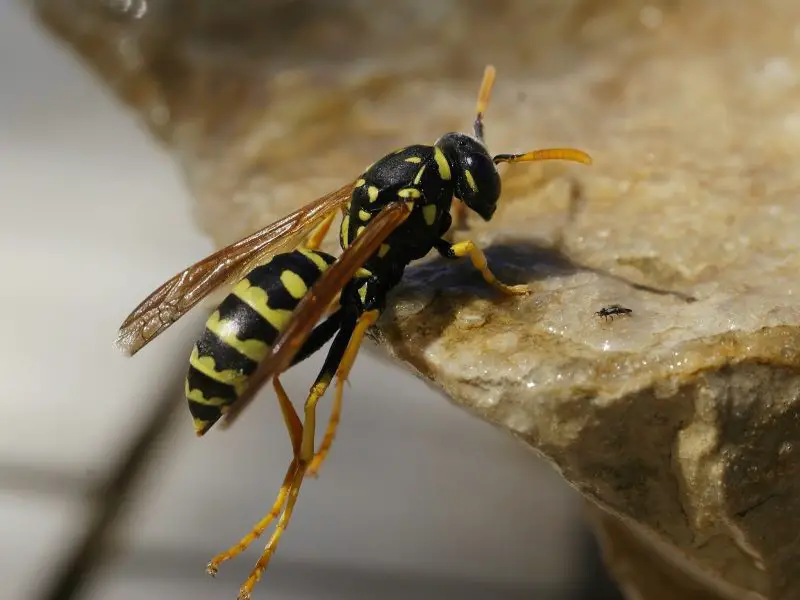
Paper Wasps are slender, long-legged insects that are frequently encountered around Connecticut homes, gardens, and sheds. Adults range from 15 to 25 millimeters in length and are typically brown with yellow or reddish markings. Their narrow waist and dangling legs during flight are distinguishing features. They derive their name from the papery nests they build from chewed wood pulp mixed with saliva.
The nests of Paper Wasps are open, umbrella-shaped structures with visible hexagonal cells, usually attached to eaves, window frames, or branches. Colonies are small, containing a single queen and fewer than a hundred workers. While generally non-aggressive when left alone, Paper Wasps become highly defensive if their nests are disturbed. They can sting multiple times, and the pain is sharp and intense, often causing redness and swelling.
These wasps are beneficial predators, feeding on caterpillars, flies, and other soft-bodied insects that damage crops and ornamental plants. They also visit flowers for nectar, playing a modest role in pollination. Paper Wasps are active during the warmer months and prefer quiet, undisturbed areas to build their nests.
Their venom is not lethal but can cause severe reactions in allergic individuals. Symptoms may include difficulty breathing, dizziness, or swelling beyond the sting site. To avoid stings, people should observe from a distance and avoid swatting. Nests near high-traffic areas should be professionally removed. Regular inspection of outdoor structures in spring can help prevent colony establishment.
Mosquito (Various Species)
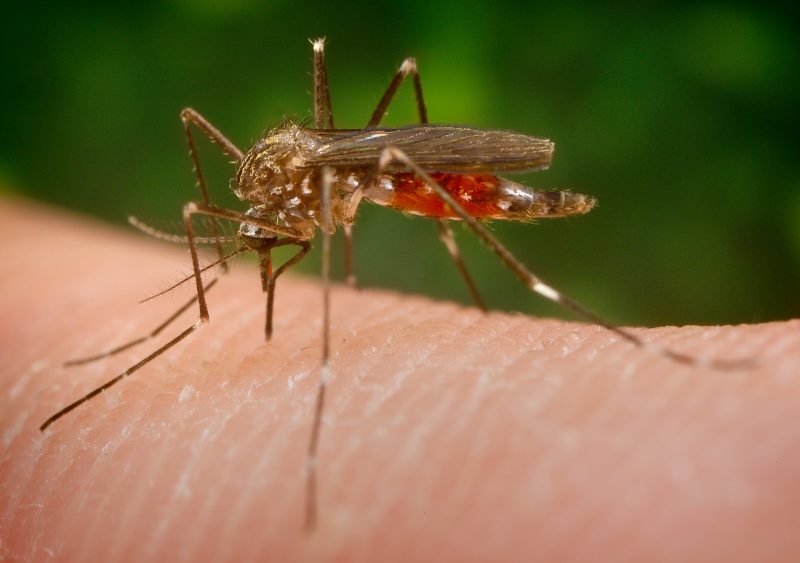
Mosquitoes are among the most familiar and troublesome insects in Connecticut. These small, delicate flies typically measure between 3 and 6 millimeters in length, with long legs, narrow wings, and a distinctive proboscis for piercing skin and sucking blood. Females feed on the blood of mammals and birds, while males consume nectar. Connecticut hosts over 50 mosquito species, including the Northern House Mosquito (Culex pipiens) and the Eastern Treehole Mosquito (Aedes triseriatus).
Mosquitoes breed in standing water such as ponds, puddles, birdbaths, and even clogged gutters. They are most active during warm, humid evenings and dawn hours. Their buzzing flight and biting habits make them a persistent nuisance. The female uses her proboscis to inject saliva into the skin, which prevents clotting but triggers an allergic response—causing the familiar itchy, red welt.
The danger of mosquitoes lies not in the bite itself but in the diseases they transmit. In Connecticut, some species can carry the West Nile virus and Eastern equine encephalitis (EEE), both of which can lead to severe neurological illness. Although infections are rare, outbreaks occur periodically during warm, wet seasons. The risk is greatest in areas near wetlands and forests.
To reduce exposure, it is essential to use insect repellent containing DEET or picaridin, wear long sleeves, and eliminate stagnant water around homes. Window screens and mosquito traps provide additional protection. Public health authorities in Connecticut monitor mosquito populations and test them for viruses each summer, helping to prevent large-scale transmission events.
Asian Giant Hornet (rare sightings)
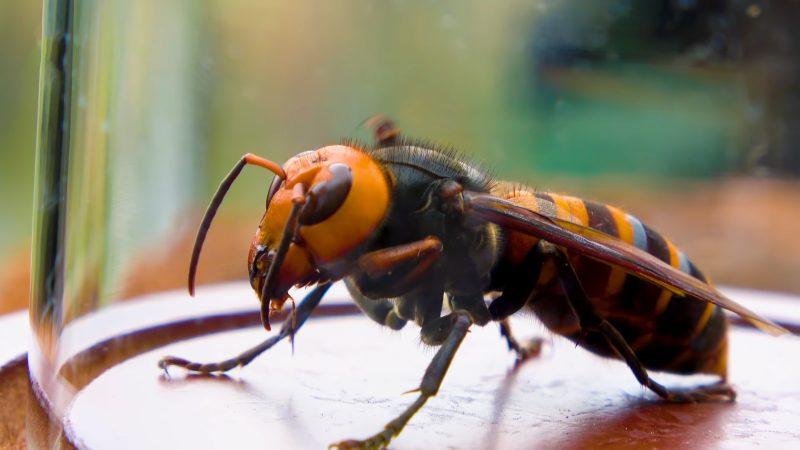
The Asian Giant Hornet, sometimes called the “murder hornet,” is the world’s largest hornet and an occasional concern in the northeastern United States, though confirmed sightings in Connecticut remain rare. Adults measure between 3.5 and 5 centimeters in length with a large orange-yellow head, dark brown thorax, and bold orange-striped abdomen. Their intimidating size and loud flight make them easy to recognize from a distance.
This hornet builds its nests underground or in tree cavities, typically near forests or agricultural areas. They are highly social insects that hunt other insects, especially honeybees, which they can decimate within hours. The species is most active during late summer and early fall, coinciding with the growth of their colonies. Though they rarely seek human contact, they defend their nests aggressively when threatened.
The sting of the Asian Giant Hornet is extremely painful, delivering a large amount of potent venom. The venom contains neurotoxins and cytotoxins that can destroy tissue and affect the nervous system. For most people, the result is intense pain, swelling, and inflammation lasting several days. However, multiple stings or allergic reactions can cause serious medical emergencies, including anaphylactic shock.
Authorities in the U.S. closely monitor for this species to prevent establishment. Residents who suspect sightings should contact local agricultural or environmental agencies rather than attempting removal. Wearing protective clothing and avoiding disturbed ground areas can reduce risk. Although rare in Connecticut, awareness remains important given the hornet’s potential impact on both human safety and bee populations.
Horsefly
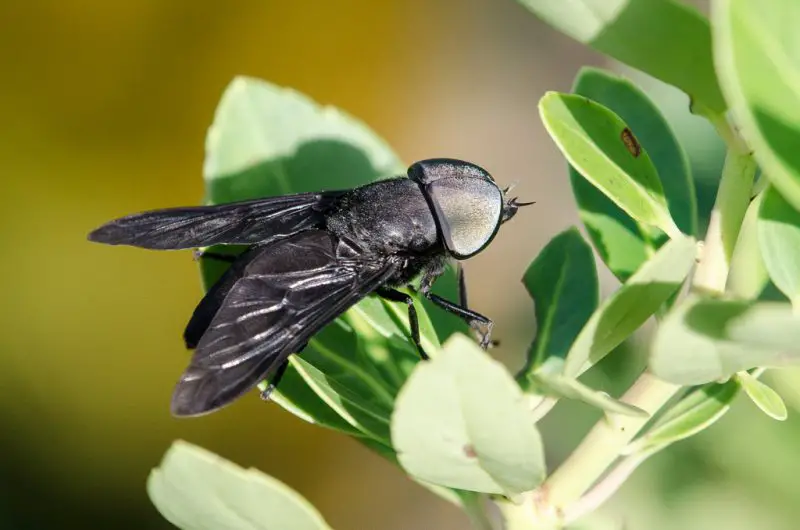
Horseflies are large, fast-flying insects known for their painful bites and persistence during warm months. Adult females measure between 10 and 25 millimeters in length, with robust, dark bodies and large, iridescent eyes that vary from green to purple. Males feed solely on nectar, but females require blood to develop their eggs. These flies are common in rural Connecticut, particularly near wetlands, farms, and wooded streams.
Their strong wings enable swift, noisy flight, and they are relentless once they detect a target. Unlike mosquitoes, Horseflies use blade-like mouthparts to slice the skin open, creating a wound from which they lap up blood. This method causes sharp, immediate pain and often leaves a bleeding welt. Bites can swell significantly and take several days to heal.
Horseflies are daytime feeders and are especially active during hot, humid weather. They are attracted to movement, dark clothing, and the carbon dioxide exhaled by humans and animals. Because they feed on multiple hosts, they can transmit bacteria and parasites between animals, and in rare cases, to humans. Their bites can also lead to secondary infections if not cleaned properly.
While their bites are not venomous, allergic reactions are possible, with symptoms such as dizziness, rash, or swelling of the throat. Protective measures include wearing light-colored clothing, using repellents, and avoiding heavily infested areas during peak season. Livestock owners should use fly traps and repellents to protect animals. Despite their nuisance, Horseflies play an ecological role in pollination and serve as prey for birds and dragonflies.
Deerfly
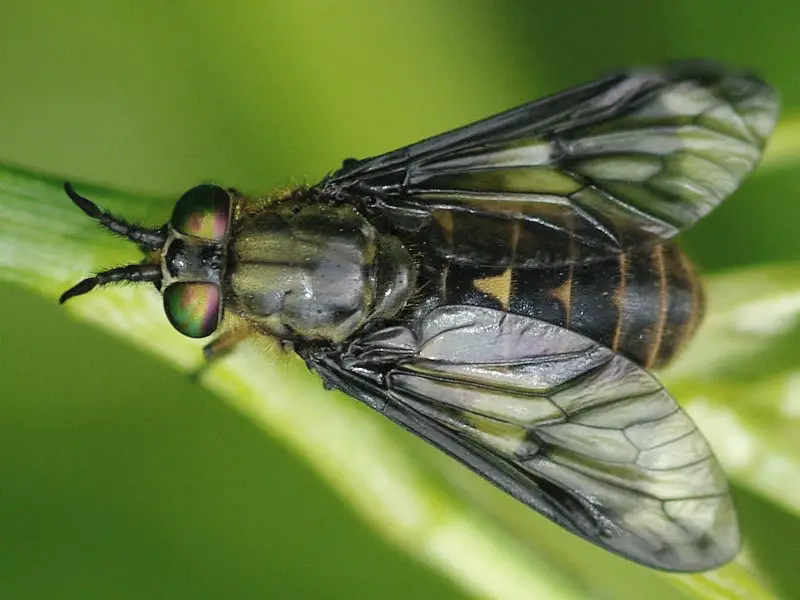
Deerflies are small but aggressive biting insects closely related to horseflies, and they are well known to residents of Connecticut during the summer months. Adults typically measure between 6 and 12 millimeters in length and can be recognized by their bright green or gold patterned eyes and dark bands on their wings. Their compact bodies and swift, erratic flight make them difficult to swat, and they often circle persistently around humans and animals.
These insects thrive in moist habitats such as wetlands, forest edges, and near streams or lakes. Females feed on the blood of mammals, while males subsist on nectar. Deerflies are diurnal, most active on sunny, humid days, particularly from June through August. Their attraction to movement, carbon dioxide, and dark clothing often brings them into close contact with people enjoying outdoor activities.
Their biting method involves slicing the skin with sharp mouthparts to create a wound from which they lap blood. The bites are immediately painful and often result in red welts, swelling, and irritation that may persist for several days. Unlike mosquitoes, Deerflies do not inject anticoagulant saliva, but their mechanical damage to skin can lead to secondary infections if the wound is scratched or left untreated.
Although Deerflies are primarily a nuisance, they can occasionally transmit diseases such as tularemia or Loa loa filariasis (rare in the U.S.). Prevention includes wearing light-colored clothing, using insect repellents containing DEET, and avoiding outdoor activities near wetlands during peak fly activity. Sticky traps attached to hats or vehicles can also help reduce their presence in problem areas.
Fire Ant (invasive risk)
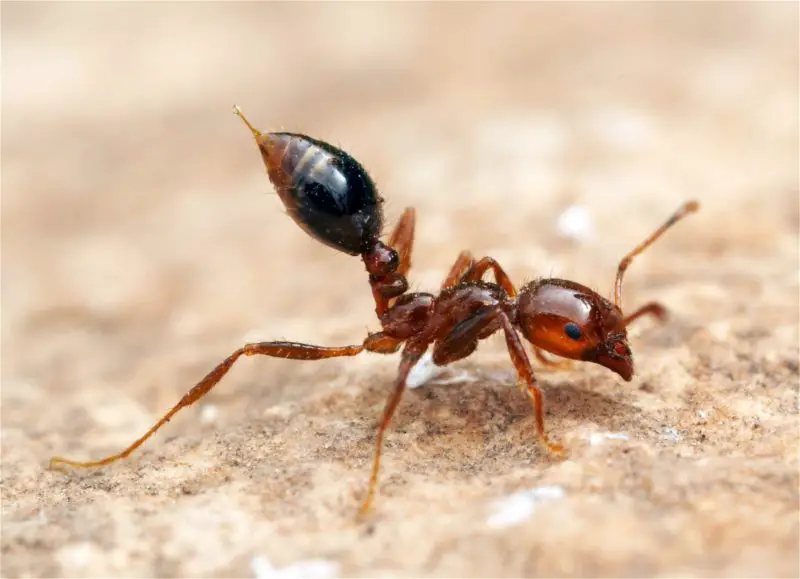
Fire Ants are an invasive species that pose a growing threat in parts of the northeastern United States, including occasional sightings in Connecticut. These ants are reddish-brown and measure about 3 to 6 millimeters in length. Colonies can contain hundreds of thousands of individuals and are typically found in open, sunny areas such as lawns, fields, or roadside soil. They build large, dome-shaped mounds that can exceed 30 centimeters in height.
Fire Ants are aggressive defenders of their colonies. When disturbed, they swarm quickly and sting repeatedly. Each sting injects venom containing alkaloids that cause an immediate burning sensation followed by the formation of itchy, white pustules. The stings are extremely painful and may last several days, sometimes resulting in scarring or infection. People allergic to insect venom can experience severe reactions, including anaphylaxis.
These ants feed on a wide variety of materials, from seeds and plants to small animals. Their colonies are highly organized, with workers, soldiers, and queens performing specialized roles. Because of their aggressive behavior, Fire Ants can displace native ant species and disrupt ecosystems. Their presence near homes, playgrounds, or agricultural fields can pose serious risks to both humans and livestock.
Although established populations in Connecticut are rare, the warming climate may facilitate their spread northward. People should avoid disturbing mounds and report suspected infestations to pest control professionals. Wearing shoes and gloves while gardening and using bait traps can help reduce the risk of stings. Early detection and professional extermination are essential for controlling invasive Fire Ant populations.
Blister Beetle
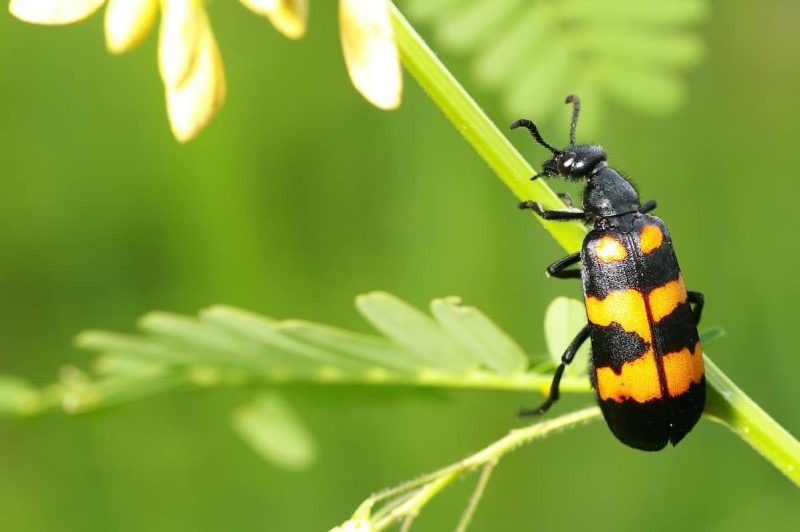
Blister Beetles are elongated, soft-bodied insects found occasionally in Connecticut’s gardens, fields, and meadows. Adults range from 1 to 2.5 centimeters in length and display a variety of colors, including gray, brown, or metallic blue. Their narrow neck and flexible body segments give them a distinctive appearance. These beetles feed primarily on flowers and foliage, particularly alfalfa and other legume crops.
Blister Beetles release a potent chemical called cantharidin, a blistering agent that can cause severe skin irritation. When crushed or handled, the beetle’s body secretes this compound as a defense mechanism. Contact with skin can produce painful blisters and swelling, while ingestion (especially by livestock) can be toxic or even fatal. Horses are particularly vulnerable if they consume hay contaminated with crushed beetles.
These beetles are not aggressive and do not bite or sting, but their presence can still pose health risks. Blisters usually appear a few hours after exposure and heal within several days without scarring. Medical treatment is rarely required unless secondary infections occur. Washing hands and skin promptly after contact helps prevent chemical burns.
In Connecticut, Blister Beetles are most active during the late summer months when temperatures are high. Gardeners should wear gloves when working around flowering plants or handling hay. Although these insects play a minor role in controlling grasshopper populations (their larvae feed on grasshopper eggs), their potential danger to humans and livestock warrants caution.
Assassin Bug (Kissing Bug)
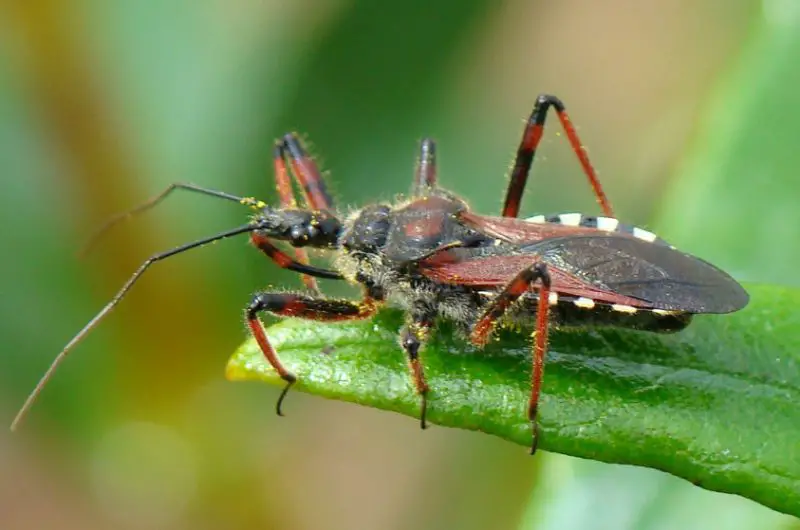
The Assassin Bug, sometimes called the Kissing Bug, is a predatory insect known for its painful bite and potential to transmit disease. Adults are typically 2 to 3 centimeters long, with narrow, elongated bodies, long legs, and a cone-shaped head equipped with a sharp, piercing beak. Their coloration varies from brown to black, often with orange or red markings along the abdomen. In Connecticut, native species of assassin bugs are common, though the disease-carrying types are rare.
Assassin Bugs feed primarily on other insects, using their proboscis to inject saliva that liquefies the prey’s internal tissues. However, if accidentally handled or trapped against skin, they may bite humans defensively. The bite is very painful, producing immediate burning and swelling. Some individuals experience allergic reactions or localized numbness. Unlike mosquitoes, they do not bite repeatedly but deliver a single, deep puncture.
Certain species in warmer climates, particularly Triatoma sanguisuga, are capable of transmitting Trypanosoma cruzi, the parasite responsible for Chagas disease. While this disease is exceedingly rare in Connecticut, it remains a concern in southern states. Local assassin bugs, on the other hand, are primarily nuisance biters and do not transmit pathogens.
To avoid bites, people should handle insects cautiously and avoid crushing unidentified bugs against skin. These insects often enter homes through open windows or gaps in walls. Using screens, sealing cracks, and maintaining clean outdoor lighting areas can help reduce their presence. Despite their potential danger, assassin bugs are beneficial predators that help control pest populations in gardens and agricultural fields.
Fleas
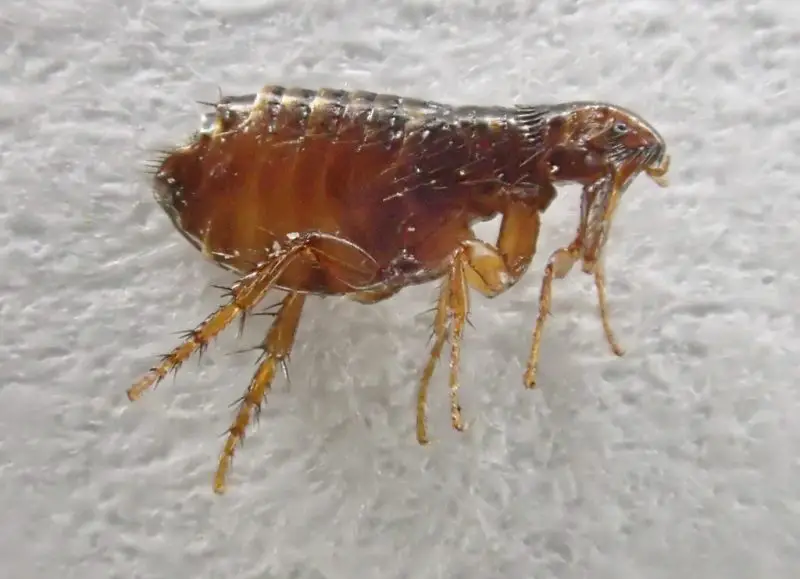
Fleas are small, wingless insects that thrive as external parasites on mammals and birds. Measuring about 1.5 to 3 millimeters in length, they have flattened, reddish-brown bodies designed for slipping easily through fur or feathers. Their powerful hind legs allow them to jump distances up to 150 times their body length, making them highly mobile and difficult to catch. In Connecticut, the Cat Flea (Ctenocephalides felis) is the most common species found on both pets and wildlife.
Fleas prefer warm, humid environments and are often found in homes, yards, and pet bedding. Adults feed exclusively on blood, while larvae develop in carpets or soil, feeding on organic debris. Infestations can escalate rapidly, as a single female can lay hundreds of eggs within weeks. These pests are most active from late spring through early fall, though indoor infestations can persist year-round.
Flea bites cause small, red, itchy bumps, typically around ankles or lower legs. Repeated bites can lead to intense scratching, secondary infections, and in severe cases, allergic dermatitis. Fleas can also transmit tapeworms (Dipylidium caninum) and bacteria such as Bartonella henselae, which causes cat scratch disease. In historical contexts, fleas were responsible for spreading bubonic plague through rodent hosts.
To control fleas, consistent prevention is key. Regularly washing pet bedding, vacuuming carpets, and treating pets with veterinarian-approved flea prevention products help break the life cycle. For severe infestations, professional pest control may be necessary. While tiny, fleas remain one of Connecticut’s most troublesome household pests due to their resilience and potential to transmit disease.
Tips for Avoiding Dangerous Bugs in Connecticut
Wear Protective Clothing
When spending time outdoors, especially in wooded or grassy areas, wearing long sleeves, pants, and socks provides the first line of defense against biting and stinging insects. Light-colored clothing makes it easier to spot ticks and mosquitoes. If possible, tuck your pants into your socks when hiking through tall vegetation to prevent ticks from reaching your skin. Avoid wearing strong perfumes or scented lotions, as these can attract wasps and mosquitoes.
Use Insect Repellents
Repellents containing DEET, picaridin, or oil of lemon eucalyptus are highly effective against mosquitoes, ticks, and flies. Apply repellent to exposed skin and clothing, following label instructions carefully. For children, use products with lower DEET concentrations. Permethrin-treated clothing can also help deter ticks and is especially useful for those who spend long hours outdoors. Reapply repellent after swimming, sweating, or extended time outside.
Keep Outdoor Areas Clean
Bugs such as yellowjackets, wasps, and hornets are drawn to food, garbage, and sugary drinks. Keep trash cans sealed, clean up food waste promptly, and avoid leaving pet food outside. Trim vegetation around the house and remove standing water in containers, gutters, or birdbaths to reduce mosquito breeding grounds. Regular lawn maintenance also helps discourage tick habitats.
Inspect Pets and Yourself Regularly
After spending time outdoors, check yourself, children, and pets for ticks. Focus on hidden areas like behind ears, underarms, waistlines, and behind knees. Remove any attached ticks promptly using fine-tipped tweezers and disinfect the area. For pets, use veterinarian-recommended tick and flea prevention products year-round, as these pests can easily enter homes through animal fur.
Be Cautious Around Nests and Infested Areas
Wasps, hornets, and ants defend their nests aggressively. Never attempt to remove a nest without professional assistance, particularly if it is underground or attached to a structure. Keep a safe distance and avoid sudden movements if stinging insects are nearby. When hiking or camping, avoid disturbing logs, rocks, or soil mounds that may hide ants, spiders, or beetles.
Maintain Indoor Protection
Seal cracks, repair screens, and ensure windows and doors close properly to prevent insects from entering. Store firewood away from the home to discourage spiders and wasps. Vacuum carpets and clean pet areas regularly to keep fleas under control. Using indoor traps or natural deterrents like citronella candles can help keep mosquitoes and flies at bay.
Frequently Asked Questions (FAQ)
What is the most dangerous bug in Connecticut?
The Black-legged Tick is considered the most dangerous insect in Connecticut because it transmits Lyme disease, which can cause long-term health problems if untreated. Other dangerous insects include Black Widow Spiders and Bald-faced Hornets, which deliver painful and potentially serious stings or bites.
Do Brown Recluse Spiders really live in Connecticut?
Brown Recluse Spiders are not native to Connecticut and are rarely found there. However, isolated sightings can occur when they are accidentally transported through shipments or moving boxes. Most brown spiders in the state are harmless species mistaken for recluses.
Are mosquitoes in Connecticut dangerous?
Yes, certain mosquito species in Connecticut can transmit diseases such as West Nile virus and Eastern equine encephalitis (EEE). While infections are rare, outbreaks can occur in warm, humid seasons. Using repellents and eliminating standing water can greatly reduce risk.
What should I do if I get bitten or stung by a bug?
Clean the area with soap and water, apply an ice pack to reduce swelling, and monitor for signs of allergic reactions. If symptoms include difficulty breathing, dizziness, or spreading redness, seek medical attention immediately. For tick bites, remove the tick carefully and watch for symptoms of Lyme disease.
Are Fire Ants established in Connecticut?
Currently, Fire Ants are not widely established in Connecticut, but small populations have been reported in surrounding states. Because of warming temperatures, their range may expand northward. Residents should report suspected colonies to pest control authorities.
How can I protect my pets from fleas and ticks?
Regular grooming and the use of veterinarian-approved prevention products such as topical treatments or collars are effective. Wash bedding frequently and vacuum living spaces to remove flea eggs and larvae. Check pets after outdoor activities, especially around the neck, tail, and paws.
Can Horsefly or Deerfly bites cause infections?
Yes, because their bites break the skin, secondary infections can develop if the wound is scratched or exposed to bacteria. Clean the bite area thoroughly and apply antiseptic. Swelling and redness are common, but persistent pain or pus formation should be checked by a doctor.
Are Black Widow bites fatal?
Black Widow Spider bites are rarely fatal but can cause severe pain, cramping, and muscle stiffness. Medical attention is necessary, particularly for children, the elderly, or individuals with allergies. Antivenom and supportive treatment can help relieve symptoms.
When are bugs most active in Connecticut?
Most biting and stinging insects are active from late spring through early fall, with peak activity in July and August. Ticks are active from early spring to late autumn, especially in mild winters. Cold temperatures significantly reduce insect activity, though some species survive indoors.
What is the best way to prevent bug bites while hiking in Connecticut?
Wear long, protective clothing, apply repellent, and stay on marked trails away from tall grass and dense brush. Avoid scented products that attract insects. After returning home, inspect your body and clothing for ticks and shower to wash off unattached ones.

